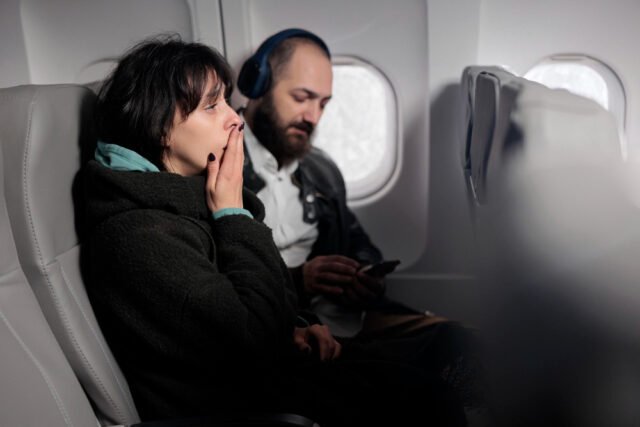For many, the thought of boarding an airplane brings excitement and anticipation. Yet for others, it triggers intense anxiety and distress. If you’ve ever wondered why, you’re not alone. The fear of flying is called aerophobia or aviophobia, and it’s one of the most common specific phobias worldwide. In this blog, we’ll explore what this airplane phobia is, its causes and symptoms, and the most effective ways to overcome the phobia of flights.
What Is Flight Phobia?
Airplane phobia is a persistent and intense fear of being on an aircraft. While some people may experience mild nervousness, those with a true phobia of flights often feel overwhelming anxiety even at the thought of flying. This condition is recognized in the medical community and is one of the most prevalent specific phobias, with estimates suggesting that up to 40% of adults experience some level of flight-related anxiety. For many, this fear can be so intense that it leads to complete avoidance of air travel.
How Common Is Airplane Phobia?
Airplane phobia is surprisingly common. Studies estimate that up to 25% of adults experience some degree of anxiety about flying, and about 10% have a severe enough phobia of flights to avoid air travel altogether. This can have a significant impact on personal and professional life, limiting travel opportunities and causing distress even when planning a trip.
What Causes Flight Phobia?
The causes of airplane phobia are complex and can vary from person to person. Some of the most common factors include:
- Previous Traumatic Experiences: A turbulent flight, emergency landing, or even hearing about aviation accidents can trigger lasting anxiety.
- Other Phobias: People with claustrophobia (fear of confined spaces), acrophobia (fear of heights), or agoraphobia (fear of being unable to escape) are more likely to develop a phobia of flights.
- Loss of Control: The inability to control the situation while flying—being at the mercy of pilots and technology—can fuel anxiety.
- Media Influence: News reports, movies, or documentaries about air disasters can reinforce fears, even though air travel remains statistically very safe.
- Biological Factors: Genetics and brain chemistry may make some individuals more prone to anxiety disorders, including the fear of flying.
Symptoms of Airplane Phobia
The symptoms of airplane phobia can be both physical and psychological, often starting days or weeks before a planned flight and intensifying as the travel date approaches. Common symptoms include:
- Rapid heartbeat or palpitations
- Sweating and trembling
- Shortness of breath or hyperventilation
- Nausea or gastrointestinal discomfort
- Dizziness or lightheadedness
- Chest tightness
- Panic attacks
- Irrational thoughts about plane crashes or disasters
- Avoidance behavior (canceling trips, choosing alternative transport)
- Overwhelming urge to escape or flee the airport or aircraft
These symptoms can be so severe that individuals go to great lengths to avoid flying, impacting their quality of life and freedom.
How Is Flight Phobia Diagnosed?
The phobia of flights is diagnosed clinically, usually through a psychological evaluation. A mental health professional will assess the frequency, intensity, and impact of your symptoms, and may also explore whether other anxiety disorders are present. Diagnosis is important for tailoring the most effective treatment plan.
How to Overcome the Phobia of Flights
Overcoming airplane phobia is possible, and many people have successfully conquered their fear with the right support and strategies. Here are the most evidence-based approaches:
1. Cognitive Behavioral Therapy (CBT)
CBT is the gold standard for treating the phobia of flights. It helps you identify and challenge irrational thoughts about flying, replacing them with realistic and positive beliefs. CBT often includes exposure therapy, where you gradually face your fear in controlled steps—starting with looking at pictures of airplanes, then visiting an airport, and eventually taking short flights. This method helps desensitize you to triggers and build confidence.
2. Exposure Therapy
Exposure therapy is a key part of CBT and involves gradual, repeated exposure to the feared situation. For airplane phobia, this might include:
- Watching videos of flights
- Using flight simulators or virtual reality (VR) technology
- Visiting airports with a therapist
- Taking accompanied flights
This approach helps retrain your brain to see flying as safe, not dangerous.
3. Medication
For some, medication can help manage the symptoms of airplane phobia. Common options include:
- Benzodiazepines: Short-term use for acute anxiety before or during flights
- SSRIs (Selective Serotonin Reuptake Inhibitors): For those with generalized anxiety or panic disorders
Medication should always be prescribed and monitored by a healthcare professional, and is most effective when combined with therapy.
4. Relaxation and Mindfulness Techniques
Techniques such as deep breathing, progressive muscle relaxation, and mindfulness meditation can help manage anxiety symptoms before and during a flight. Practicing these regularly can make it easier to stay calm in stressful situations.
5. Education and Preparation
Learning about aviation safety, how planes work, and what to expect during a flight can demystify the experience and reduce anxiety. Many airlines and airports offer fear-of-flying courses, which combine education with exposure and coping skills training.
6. Virtual Reality Therapy
- VR therapy is an innovative treatment that immerses you in a simulated flying environment. This safe, controlled exposure can help you confront your phobia of flights and practice coping strategies without leaving the ground.
- Tips for Managing Airplane Phobia During a Flight
- Choose seats near the front of the plane, where turbulence is felt less
- Bring calming music, podcasts, or distractions
- Inform flight attendants about your anxiety—they are trained to help
- Travel with a supportive companion if possible
Practice relaxation techniques during takeoff and turbulence
When to Seek Professional Help
If your fear of flying is called aerophobia or airplane phobia and it’s affecting your life, don’t hesitate to seek professional support. With the right treatment, most people can overcome their phobia of flights and regain the freedom to travel confidently.
Conclusion
The fear of flying is called aerophobia, and while it’s common, it doesn’t have to control your life. By understanding the causes and symptoms of airplane phobia and using proven strategies like CBT, exposure therapy, and relaxation techniques, you can overcome your phobia of flights and enjoy the opportunities that air travel brings. If you’re struggling, reach out to a mental health professional—help is available, and recovery is possible.







